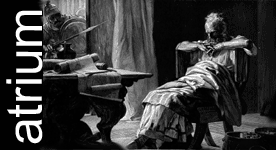From the Northern Echo:
DWELLINGS dating back to the Iron Age and Roman eras have been uncovered during work on a major road improvement scheme in the region.
The half-dozen round houses, including paddocks and fields, were uncovered along the A66 during work to create a dual carriageway.
The scheme is focused on the stretch between Carkin Moor and Scotch Corner and Greta Bridge to Stephen Bank.
Advertisement continued...
And it was while excavations were being carried out at Scotch Corner, near the junction of two Roman roads, that the discoveries were made.
Highways Agency project manager Lynne Biddles said: "It's fantastic weve been able to uncover all these settlements and artefacts ahead of these dualling schemes. We can now piece together the history of this area and preserve it for the wider community to enjoy."
The site is close to the Melsonby crossroads and other features include a circular house, square structures, pits and field ditches. These are thought to be associated with a larger settlement close by on the other side of the A66, near Rock Castle Farm.
The finds, to be handed to a local museum, were discovered with the help of a team of archaeologists who have been carrying out detailed excavations in four areas on the Carkin Moor to Scotch Corner stretch, in advance of the major works.
The existing A66 follows the line of an important Roman road, dating back to the 1st century AD. Potential sites were discovered in 1999 and these helped to influence the early design of the road schemes.
Archaeologists were given the green light to begin the excavations last May.
The road scheme has enabled archaeologists to carry out the first excavation of Scots Dyke, a large ditch running for 14km through North Yorkshire, in modern times.
Experts now believe to be 1,000 years older than was previously thought and is provisionally dated to the 1st century AD.
The site is considered of such importance that an unexcavated section will be preserved intact under the new A66 carriageway.
Metal detecting near Black Plantation has also revealed another insight into the way communities lived in the 17th and early 18th centuries with the discovery of objects such as a small silver christening spoon.
